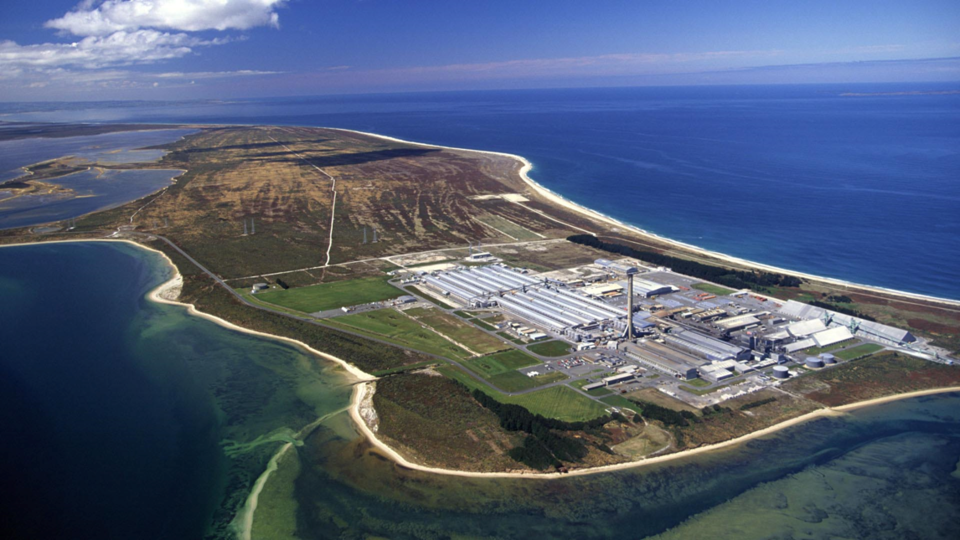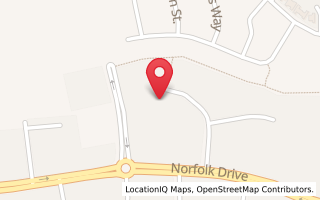Tiwai Point Industrial Hub
14 July 2021 update
The project concept has been completed in full draft form and is now looking for a suitable location so the final design and planning can be concluded and the project is ready to commence.
The current locations under assessment are:
- New South Wales, Australia
- Location in Wales
- Sardina, Italy
We are still looking for other alternative sites and are open to idea's if you think a project of this scale and type is suitable.
12 January 2021
We selected a group of highly experienced individuals, with the required skill sets to take ownership of the project. With the establisment of a full private enterprise we secure the commercial success of this venture.
Close deliberations with the NZ Governement, resulted in susgestions and directions that led to strategic additions to the team. For those interested in a project of this scale and nature, feel free to enquire.
1 December 2020
The project is currently awaiting the results of the NZ Treasury negotiations between the NZ Government and Rio Tinto before we can proceed with any further discussions.
All progress has been made with some changes to the project and increase in scale to accommodate some changes and opportunities that have presented themselves. All talks with different NZ Government bodies have been concluded as far as they can be and we are now awaiting discussions with NZ Treasury before being able to proceed.
As always the project is open to private funding opportunities.
Update 16 July 2020
Currently the project has reached the feasibility stage where it is awaiting the response from NZ Government for funding, it is also now open to offers of funding on a project of this scale.
Please find below the project briefing outline of the concept and general figures associated with a project of this scale.
Project Overview:
The project came about in preparation for the closing of Tiwai Smelter in Bluff and has been in the draft stage awaiting this opportunity.
It is designed to be carried out over a 7 year period to ensure all concepts of the reclaiming and neutralising of the existing hazardous environment is carried out and all expansion can have their environmental impacts reduced and neutralised as they start production.
This time frame also allows for a slower and reduced impact on the community from the jobs created, supporting services coming from the community’s, staff training and sourcing accommodation as families move into the area.
Concept Base:
The Industrial Park is designed to be built around the existing Plant located on Tiwai Point currently being run by the Rio Tinto Corporation as the major shareholder. Currently operating under the closure notice in Aug 2021 from Rio Tinto.
Plant Expansion:
All new investments are on new Titanium Smelter which will be utilising the waste material associated with the bauxite. This will allow the creation of Titanium/Aluminium alloys, and a purer high-grade source material for further processing. Next would be the Aluminium battery manufacturing plant, Extrusion Plant and Framing. Upgrade the Aluminium mill to produce all grades of Aluminium Bar/Sheet/Plate and marine grade products for sale domestically and internationally, Tech manufacturing plant, etc
Electricity:
Due to the Power base load required to operate the plant efficiently and to maintain the high-grade product produced, a new source is needed as the New Zealand government is looking to recover the power produced by Manapouri Dam back into the national grid. Tiwai smelter is the country’s 3rd largest consumer of power. With the expansion and development of this concept it is feasible to place 2.3GW power plant combination on site, which also can be connected to support the national grid
Infrastructure Upgrades:
Part of the allocated funds is upgrading key infrastructure support required to ensure long-term sustainability. The following key points are the initial estimated areas of interest but will be finalised by the feasibility study to follow.
Rail: this is to allow for raw material to be shipped from Auckland and the west coast to Bluff as well as from Bluff to Dunedin for finished products to the domestic markets and some exporting options
Roading: The main roads between Bluff harbour / Tiwai Point / Invercargill city to handle the increase traffic flow due to the construction process and the increased staff working on site long-term.
Power Grid Connection: With the construction of the planned power plant on site the national grid will need to be reconfigured to allow for the Manapouri plant to send power into the National grid, so it will need to build a suitable substation at a suitable connection site to enable this to happen or it can use the existing system and connect at the Tiwai Point newly created substation. Also planned is a suitable substation on the edge of Tiwai Point Boundary that will support a second substation connecting the Tiwai Plant to the national grid so Tiwai Point can supply base load support to the people of Southland and into the national grid as required.
Bluff Wharf: The wharf upgrade will be focused on barge access and loading and unloading facilities for export finished products shipped across the harbour from Tiwai point and will need a custom office upgrade to ensure compliance is maintained. It can also then act as the Rail connection HUB for the shipment of raw and finished material to/from Tiwai point.
Onsite Services upgrade:
The following services are required onsite for the increased safety of staff and plant as well as a secondary source of support to the Southland region. These are:
Fire: Full upgrade of personnel and equipment will be needed to cover and potential hazardous crisis, Gas related fires and explosions to plant and scrub fires. This means a full purpose built building to house the team and this building will also include the medical and security units, as well as 1x fire boat in support of Bluff harbour to be berthed at a suitable location away from the main Tiwai Pier, (note: 1 small extra pier may be required to berth this vessel).
Medical: The medical team will have a fully mobile hospital from CT scanners, Xray unit, day surgery theatre, specialised services, etc as well as a fully equipped medical centre that allows for onsite treatment and triage of victims from any event that may happen onsite or in the region. This clinic will also be able to provide emergency response services and support to the Bluff Harbour as victims can be carried across the harbour quicker than going to Invercargill Hospital initially, once stabilised they can get transferred to Invercargill Hospital. (Note: the mobile medical units are there to support the Greater Southland Regions medical needs and help both major hospitals manage their specialist waiting list with minimum impact on the community) This project is set for completion after separate needs analysis is completed.
Employment:
Currently employing around 2260 directly and indirectly in the community. The project is looking to grow the number of fulltime positions onsite by estimated 6,000-8,000 plus the supporting roles by 1,000-1,500. This does not account for the estimated 10,000+ supporting roles that will accompany the families that will arrive
This recruitment will be carried out firstly from the local surrounding communities and will include the appropriate training programs with jobs at the end of it, then it will be expanded nationally and internationally as the situations decree the needs to be met.
Environmental approach:
It is recognised that the smelting process generates and uses a high range of toxic chemicals which is vaporised off as well as in the residue onsite.
Through redesigning the plant and the planned plants full processes and upgrades to centralise all hazardous air and waste go through a central process treatment plant.
This plant will be utilising the diverse process onsite as well as the side benefits that come from running natural gas turbine power generates to treat both the air and waste material prior to being expelled through air scrubbers and on to land based storage sites.
All waste material will be looked at its potential to have elements recovered and utilised in different areas of the processing systems or into totally different products. This will leave smallest possible carbon footprint as well as leaving the smallest amount of waste material on site.
Projected Budget:
It is expected to require an investment of $5.3bn NZD to $6.5bn NZD spent over 7 years based upon today’s current market pricings.
The operational budget for the completed site and fully operational is estimated at $2.5bn per annum with the most of this being spent in the greater Southland region.
The return on this investment is yet to be confirmed through a full detail feasibility study, which will be able to take into account all the markets and profits from the downstream processing with full control over the initial up stream manufacturing and quality control costs.
Conservation areas on site:
The project will taking into task the full protection zones around the Key conservation sites to ensure that both the small sea birds habitat and the native fauna is protected from all forms of impact from the sites activities and after completion is happy to fence off all designated sites with restricted access to the approved personnel from the conservation department and associated approved researching personnel.
All areas not associated with operating the facilities will be replanted in conjunction with local iwi to ensure the native plantings directly related to securing of the last natural swamp area and provide a solid base to look at what native animals etc can be returned to the area.
Independent Economic Zone:
This is a solution to the politics surround a concentration of growth and allow for the exporting/importing of products internationally without effecting the domestic dollar rates, and to limit the impact it has on the national, regional growth figures as a whole for the country.
Tiwai Point is 6,000 hectares of suitable land Surrounded by the sea and a natural large swamp where it joins the land with only a single bridge for access. This makes it very suitable for its creation as it can be easily secured, and access restricted accordingly.
Ownership:
Currently the final ownership composition of the operating and owner of the facilities is been made available for the national/local/region governing bodies to take up 9rthe offer is so NZ can keep all profits) but is subject to change if/when the private funding source is secured.
Concept Outline
The concept behind creating this Industrial Manufacturing Park is to bring back high-quality end-product manufacturing into New Zealand.
The aim is to provide a low cost and consistency in supply of raw material to the manufacturing plants with all profit being made in the final products brought to market.
The Industrial Manufacturing Park is designed to become the new in revolutionary standards in the manufacturing environmental fields with the application of both mechanical and environmental processing treatments for all aspects of the operation. The aim of the plant is 0% CO2 generation from the site.
This new industrial hub is designed around securing the Aluminium smelter and its existing plant intact, then adding new facilities to the site.
- Power plant giving a total of 2.3GW in power generation.
- The Environmental system will be established and looking at the existing plant and air flow systems to redirect them to go through the combustion system of the generators prior to going through the carbon scrubbers, CO2 removal system and solution traps.
- Upgrading the wharf at Tiwai Point to have the capacity to unload two different bauxite minerals and the loading/unloading of Natural gas piping facilities.
- Once the Power Plant, Titanium smelter, Alloy Steel Mill, Environmental unit and replumbing and alterations to the ducting is completed then all the exiting and newly generated toxic waste in the air/water/solids are sent through the environmental units.
- Aluminium extruding and moulding plant with the ability to produce any door/window product or aircraft framing components is to be built.
- Small scale full robotic circuitry board manufacturing, utilising the aluminium made on site which is of the right grade for this process.
- Hybrid Battery plant building batteries for the automotive industry based upon the aluminium and the way it works
- Cement manufacturing plant utilising all the waste bauxite suitable for this process.
- Brick Manufacturing to clean up the balance of any waste material from the bauxite.
- Hydroponic plant is designed to work as a large CO2 battery and processing of the removed CO2 generated by the plant.
Posted: Mon 16 Dec 2019
|
© Copyright Sasquatch Limited
- Site map
|


